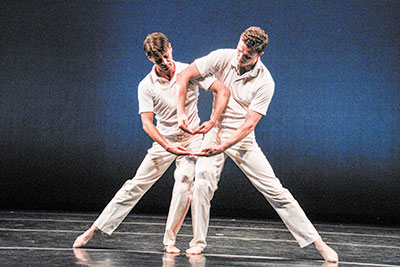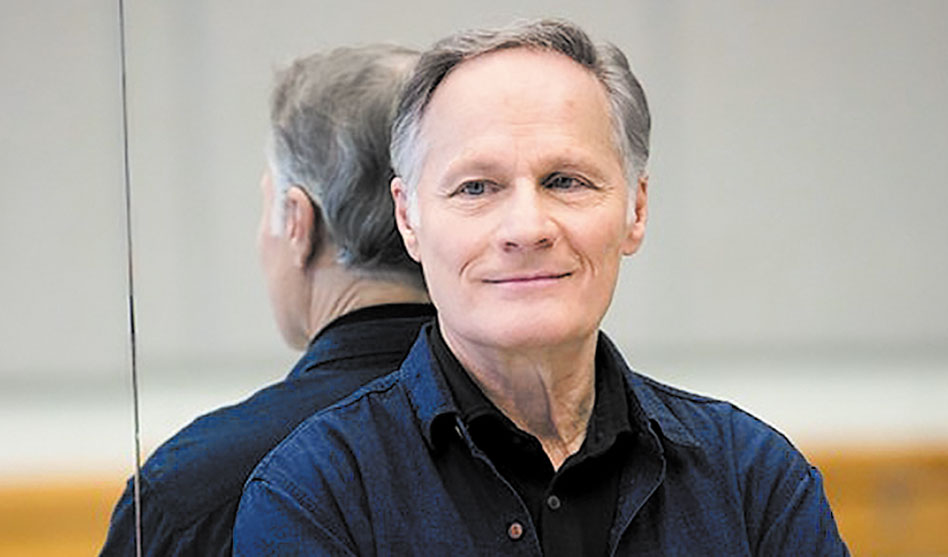Lar Lubovitch (Photo by Rose Eichenbaum)
Bruce Wood Dance debuts a legacy piece by Lar Lubovitch for its gala
RICH LOPEZ | Staff writer
rich@dallasvoice.com
On Saturday, April 29, Bruce Wood Dance hosts its 13th Anniversary Performance and Gala at the Moody Performance Hall. Normally a repertoire like this would feature a Bruce Wood piece. But this time the night’s programming focuses completely on works choreographed by Lar Lubovitch.
Wood danced for Lubovitch in Lubovitch’s own company before starting Bruce Wood Dance. And now Lubovitch is here to work with Bruce Wood Dance for its gala — a true full circle moment.
“Lubovitch had a profound influence on Wood’s creative style,” BWD Artistic Director Joy Bollinger said in a press release. “Together we will celebrate where our founder began and showcase how his legacy continues to go forward.”
The gala will feature a cocktail reception, dinner and an auction as well as honoring arts patron Carol Crowe with the 2023 BRUCE Award. Proceeds benefit the company’s programming and outreach efforts.
Wood developed his own artistry while dancing in the Lar Lubovitch Dance Company out of New York City in the 1980s. For the gala, BWD will perform “Elemental Brubeck,” the world premiere of Lubovitch’s “Conversing with Brahms” and the Dallas premiere of “Concerto Six Twenty-Two,” a piece that Wood himself was part of.

Concerto Six Twenty-Two (Photo by Phyllis McCabe)
The latter is a piece Lubovitch created and debuted in 1986 as a response to the AIDS epidemic, and it features what may be one of the first male duets in contemporary dance. In a conversation with Lubovitch about “Concerto Six Twenty-Two,” he noted comparisons between the piece coming out during an epidemic and now premiering in Dallas during a pandemic, plus his professional relationship with Wood and, subsequently, Wood’s own company.
The back story
Lubovitch choreographed “Concerto” at the height of the AIDS epidemic. As he observed what was happening around him, he landed upon a particularly poignant theme to build upon.
“The piece was choreographed in observation of the fact that ‘friendship’ was a theme emerging very powerfully,” Lubovicth said. “Friends were helping friends die with grace and dignity, and we all had friends who were ill or had passed. The demonstration of that depth of friendship was something that needed commenting on. So I choreographed this piece based on that idea and a duet for two men.”
The company debuted the piece at the Lincoln Center fundraiser Dancing for Life. That night was also a big moment for the theater and dance communities — or perhaps, a big statement. That night marked the first that the industry acknowledged the severity of the AIDS epidemic.
“This was a way to make the situation public but to also comment on something essential,” Lobovitch said.
Not everyone was on board, he recalled, noting that some dance companies “didn’t even want to sign up because they didn’t want to be identified by it, even though they had gay men and people with AIDS in their companies.”
AIDS speaks to Bruce Wood, the dancer and choreographer, and to Lubovitch.
“He had been a member of my company when he was diagnosed, but he was quite healthy when he was with us,” Lubovitch said of Wood.
“‘Concerto’ existed when he joined, but he did dance the solo role in another section of it, but not the duet.”
The impact
The immediate impact of that night was big. The Lincoln Center event raised more than a million dollars, a big number for the ’80s. But Lubovitch’s piece would go on to have perpetual influence as a statement piece.
“The duet has been called one of the most famous for men, and it opened the door for creating more duets for men and became an emblematic piece for many AIDS benefits,” he said.
BWD Executive Director Gayle Halperin describes the piece as immensely moving.
“This work has been seen worldwide and features one of dance history’s most famous male duets. The duet brings tears to your eyes as you know the love, compassion and comfort extended to each other,” she said in an email.
Lubovitch’s plan was to make a statement but not to necessarily be a radical. But, “In fact, it was radical, and it was viewed as such,” he said.
“We had gotten booed from time to time because it wasn’t acceptable to see two men touch on stage even though it is not sexual in any way.”
But not all reactions were negatives. The piece, Lubovitch said, was embraced not only as a message to the gay community but as a message to everyone. It was a humanitarian piece more so than a gay one.
“It’s an expression of friendship,” the choreographer said. “The idea that men would touch or lift was symbolic to audiences. That was unique.”
The piece has not been out of circulation since it debuted, he added.
The changing language of AIDS
HIV/AIDS is still very much a part of today’s conversation among the LGBTQ community (and beyond), so how does “Concerto” play now?
For Lubovitch, it can be taken at face value and not as a thorough representation of the epidemic as it was back then. But, he reminds, it can still speak to the times, “through the lens of loyalty and integrity and to treat each other with grace in a world that is becoming increasingly more hostile.”
Today we’re once again in the midst of a pandemic. And Lubovitch said he finds a parallel message within his piece to address that ol’ coronavirus: “It’s like being at war, so two men have this bond to protect each other and value each other’s lives. This human ability to save each other is being expressed in this duet, and it can be applied to this war against COVID the same as the war against AIDS.”
This full circle moment
Lubovitch was Bruce Wood’s mentor before Wood returned home to Texas to found BWD. In the beginning of BWD, Lubovitch recalls creating a small piece for one of the company’s first performances, a piece that probably “no longer exists anywhere.” To bring this piece to BWD for a debut is not a bad thing at all, he said.
“To have my dance at this high quality company and the significance of it is a thrill,” he said.
And teaching the piece (among others) to the company has been special. They even watched video of the dance to learn where Wood is performing in it. The legacies of both Wood and Lubovitch are perpetuated in a somewhat fortuitous cosmic fashion.
“Legacy has legs. I think everyone here has that sense of connection. Gayle and Joy invited me knowingly to work with the company, and the dancers are well informed,” Lubovitch said. “That they still care about my work and invest in it is very meaningful.”
For more information and gala tickets, visit BruceWoodDance.org.

